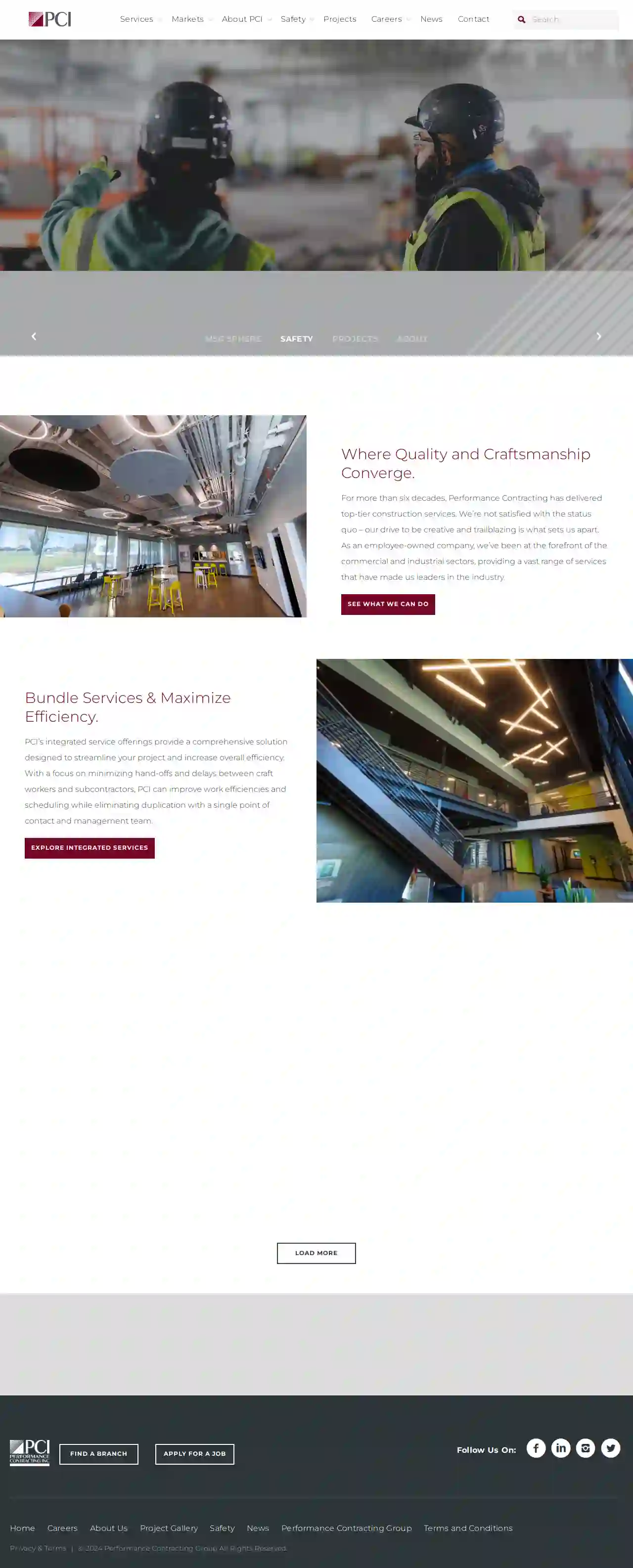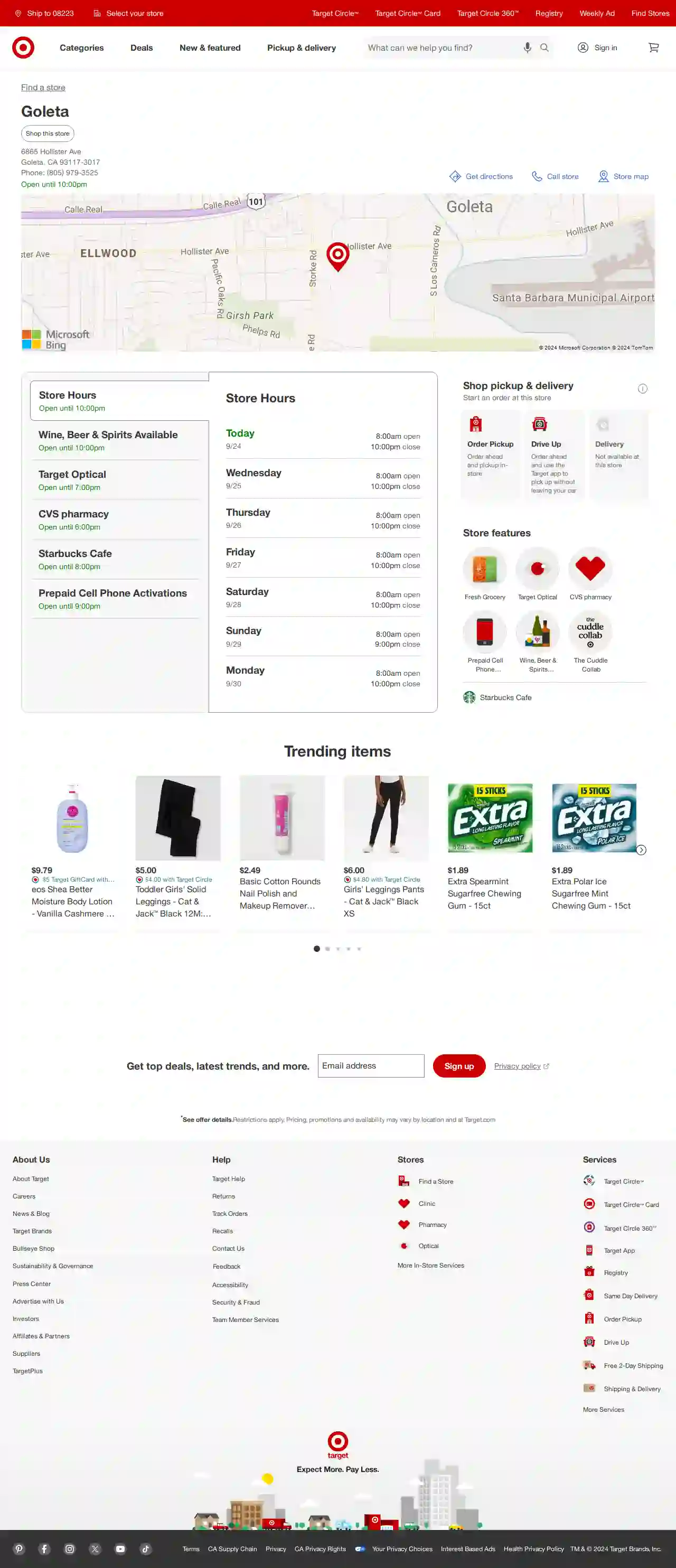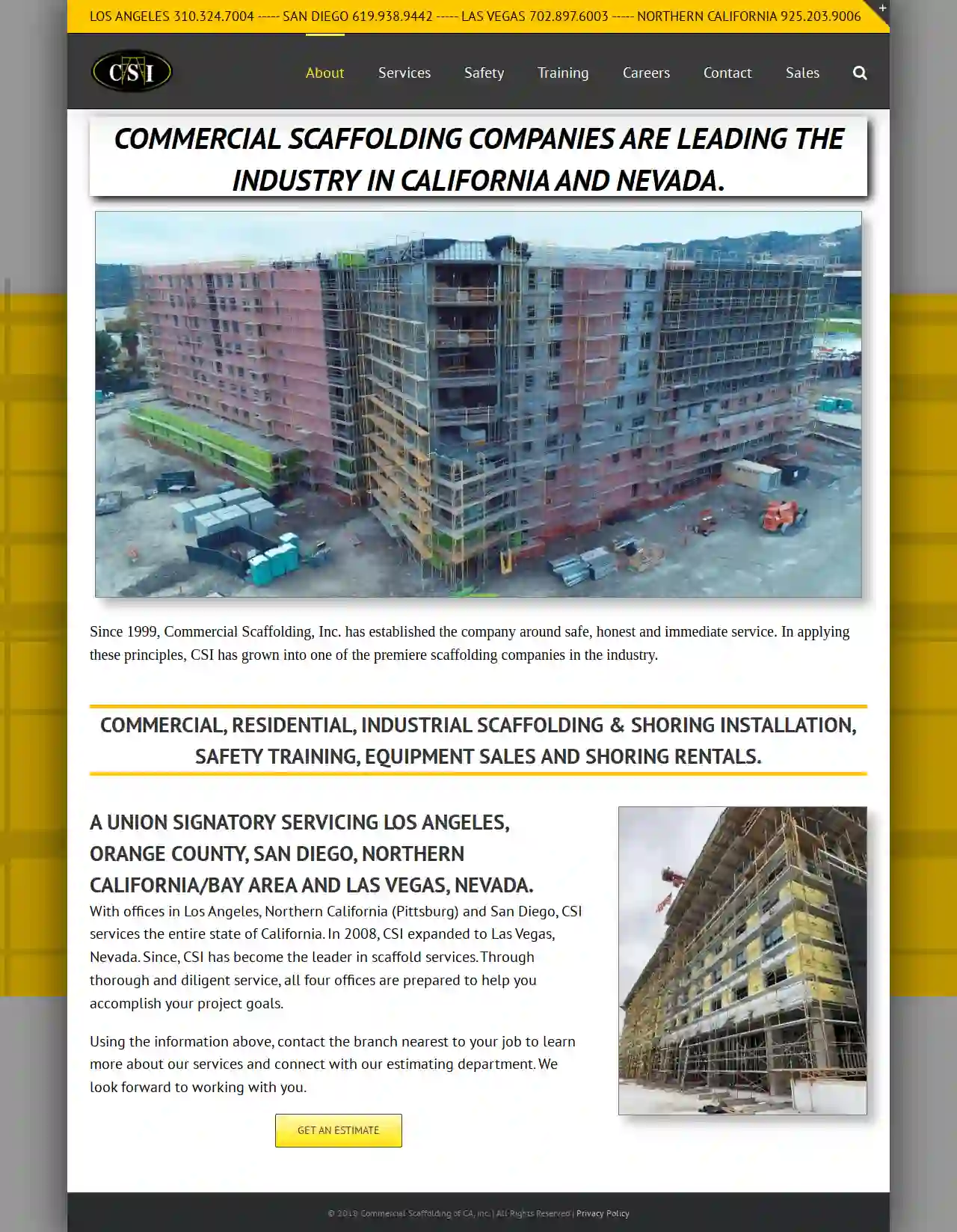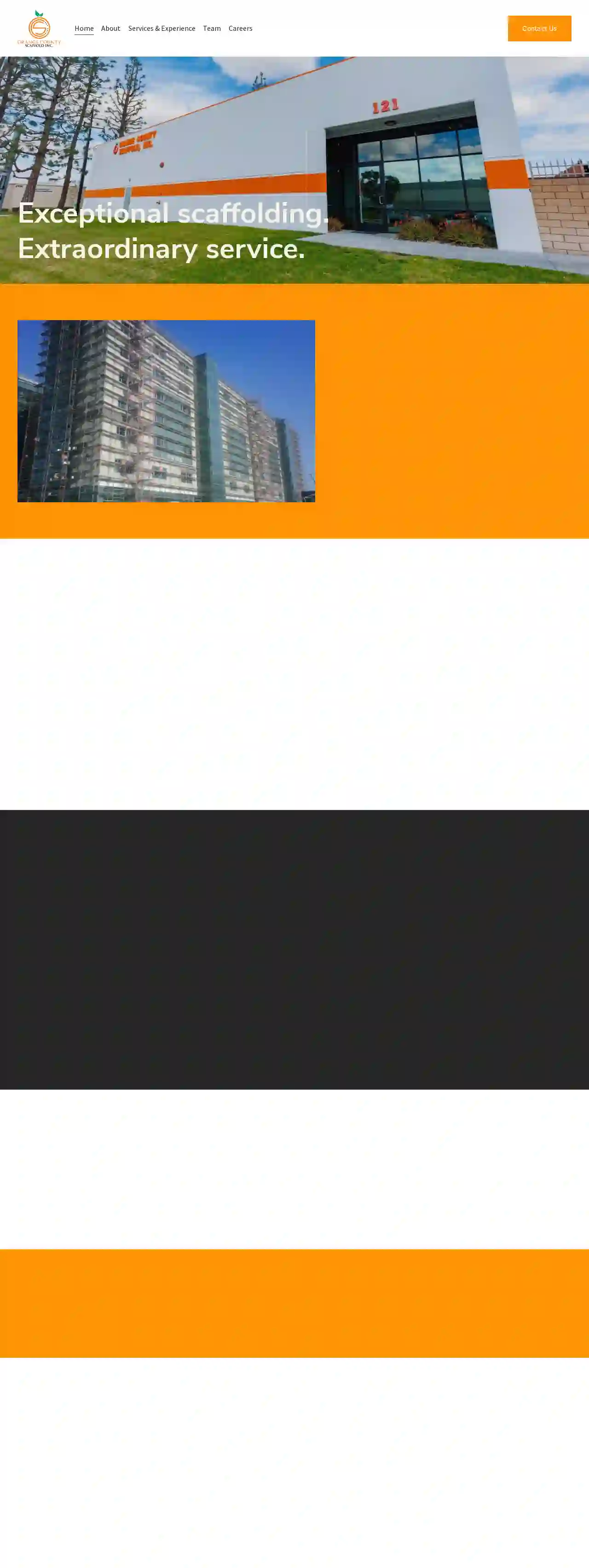Scaffolding Companies Lake Mathews
Find the best Scaffolding Company in Lake Mathews
Receive up to 3 Scaffolding Company quotes for your project today! Compare profiles, reviews, accreditations, portfolio, etc... and choose the best service.

Skyway USA
51 reviewsVallejo, USSkyway: Your Trusted Partner for Industrial and Commercial Solutions Skyway is a leading provider of industrial and commercial scaffolding, shoring, and safety systems. We have been serving the Canadian market for over 49 years, and we are committed to providing our clients with the highest quality products and services. Our Mission Our mission is to provide our clients with safe, efficient, and cost-effective solutions that meet their specific needs. We are dedicated to providing our clients with the highest level of customer service and support. Our Values Our values are safety, quality, innovation, and customer service. We are committed to providing our clients with the highest level of safety and quality. We are constantly innovating to develop new and improved products and services. And we are dedicated to providing our clients with the best possible customer service. Our Services We offer a wide range of services, including: Industrial Scaffolding Insulation Painting and Protective Coating Fireproofing Abatement Access Scaffolding Swing Stage Shoring Forming Fencing Hoardings Debris Chutes 3D Digital Services Why Choose Skyway? There are many reasons to choose Skyway for your next project. We are: Experienced: We have over 49 years of experience in the industry. Reliable: We are committed to providing our clients with the highest level of quality and service. Innovative: We are constantly developing new and improved products and services. Customer-focused: We are dedicated to providing our clients with the best possible customer service.
- Services
- Why Us?
- Gallery
Get Quote
Performance Contracting Inc
3.54 reviewsSuite 100, 123 Main St, Kansas City, 64111, USAs a top-tier specialty contractor in the United States, Performance Contracting, Inc. takes pride in providing a comprehensive range of solutions and services to our valued clients. Our expertise and commitment to excellence ensure that we consistently meet and exceed customer expectations, setting the standard in the construction industry. With over 60 years of industry experience, PCI expertly delivers innovative solutions tailored to the specific needs of diverse market sectors. Our vast expertise and dedication to addressing unique challenges ensure that every project benefits from our proven track record. As an employee-owned company, we’ve been at the forefront of the commercial and industrial sectors, providing a vast range of services that have made us leaders in the industry. Our drive to be creative and trailblazing is what sets us apart.
- Services
- Why Us?
- Accreditations
- Our Team
- Testimonials
- Gallery
Get Quote
J1 Scaffolding
Higuera Road, San Jose, California, 95148, USJ1 Scaffolding is a trusted provider of commercial and residential scaffolding services in the San Francisco Bay Area and Northern California. With over 15 years of industry experience, they offer end-to-end scaffolding solutions, including planning, engineering, staging, erection, inspection, dismantle, and clean up. Their team is highly skilled and experienced, with a focus on health and safety. They are fully insured and members of the local 405 union.
- Services
- Why Us?
- Accreditations
- Our Team
- Testimonials
- Gallery
Get Quote
Target
3.5135 reviews6865 Hollister Ave, Goleta, 93117-3017, USTarget is a general merchandise retailer that offers a wide range of products, including clothing, electronics, home goods, and more. They have a strong focus on providing excellent customer service and a convenient shopping experience. With a presence in many locations across the US, Target is a popular destination for both online and in-store shopping. Their commitment to quality, value, and convenience has made them a trusted brand for many consumers.
- Services
- Why Us?
- Accreditations
- Our Team
- Testimonials
- Gallery
Get Quote
Commercial Scaffolding of California, Inc.
4.813 reviewsLos Angeles, USCommercial Scaffolding, Inc. (CSI) is a leading scaffolding company in California and Nevada, providing safe, honest, and immediate service since 1999. With offices in Los Angeles, Northern California, San Diego, and Las Vegas, CSI offers a range of services including commercial, residential, and industrial scaffolding and shoring installation, safety training, equipment sales, and shoring rentals. The company is a union signatory, dedicated to helping clients achieve their project goals.
- Services
- Why Us?
- Gallery
Get Quote
A1 Equipment Rentals
4.927 reviews5809 E Brown Ave, Fresno, 93727, USWelcome to A1 Equipment Rentals, your #1 source for equipment and tool rentals, and supplies in Fresno, CA. Our goal is to provide our customers in the Central Valley with a great rental experience. We offer solutions for homeowners and contractors, and our family-owned and operated business has been serving the community since 2013. Our story began when Justin Priddy, our founder, worked as a manager at a small local equipment rental company for 13 years. When the owner decided to close the business overnight, Justin saw an opportunity to start his own rental yard that would cater to small businesses and homeowners. With the help of his parents, Bill and Jordan Priddy, A1 Equipment Rentals was established, and we've been growing ever since. We believe in building strong relationships with our customers, treating each person like family, and providing excellent customer service. Our team is dedicated to helping you rent the right equipment and tools you need to get the job done. Whether you're a professional contractor or a homeowner, we've got you covered.
- Services
- Why Us?
- Our Team
- Gallery
Get Quote
NGS New Generation Scaffold, Inc
51 reviews15540 Mission st, Hesperia, 92345, USNGS New Generation Scaffold is a family-owned business with a fresh approach to the scaffolding industry. Our team consists of seasoned tradesmen with years of field experience, ensuring we bring tried-and-tested methods and a commitment to quality service. We specialize in planning, erecting, modifying, and dismantling scaffolds of all sizes, from small platforms to multi-story structures spanning entire facilities. Our expertise covers a wide range of projects, including oil refineries, power plants, water treatment plants, bridges, mining facilities, and multi-story buildings. We prioritize safety and efficiency, adhering to strict OSHA and MSHA guidelines. Our supervisors are fully educated in these procedures, ensuring accident-free work environments. At NGS, we believe in building strong relationships with our clients. Our staff is always available via phone or email, providing prompt communication and support. We strive to exceed expectations by delivering reliable, high-quality scaffolding solutions tailored to each project's unique needs.
- Services
- Why Us?
- Gallery
Get Quote
Access Systems Solutions
183A Beacon Street, South San Francisco, CA, 183A Beacon Street South San Francisco, 94080, USAccess Systems & Solutions is the leading scaffolding rental provider in the USA. We aim to simplify construction or renovation projects with high-quality, affordable scaffolding solutions. Turnkey Solutions for Permanent & Temporary Building Access Systems for Architects, Contractors, and Developers. Learn More Access Systems & Solutions Learn More Learn More
- Services
- Why Us?
- Gallery
Get Quote
Orange County Scaffold Inc
3.29 reviews121 E. Meats Ave., Orange, 92865, USOC Scaffold is a leading Southern California scaffold provider with unparalleled expertise in the industrial, commercial, residential, and infrastructure sectors. For over 50 years, our family-owned business has built strong relationships within the industry, handling projects ranging from small-scale to multi-million dollar ventures. We specialize in delivering innovative scaffolding solutions, temporary access and egress, and industrial services, tailored to meet the unique needs of each project. Collaborating closely with architects, engineers, and construction professionals, we ensure flexibility, safety, and efficiency in every task. At OC Scaffold, we're more than just a service provider; we're your trusted partner in building success.
- Services
- Why Us?
- Our Team
- Testimonials
- Gallery
Get Quote
BrandSafway Services Los Angeles
4.921 reviews123 BrandSafway Blvd, Los Angeles, 90001, USBrandSafway is a leading provider of access solutions, including scaffolding, aerial work platforms, and forming and shoring equipment. With a strong commitment to safety, quality, and customer satisfaction, BrandSafway offers comprehensive solutions tailored to meet the unique needs of clients across various industries. Their team of experienced professionals works closely with clients to understand their requirements and deliver customized solutions that enhance efficiency, productivity, and safety on site. BrandSafway's mission is to provide innovative access solutions that help clients achieve their goals while maintaining the highest standards of safety and quality.
- Services
- Why Us?
- Accreditations
- Our Team
- Testimonials
Get Quote
Over 2,353+ Scaffolding Contractors on our directory
Our scaffolding experts operate in Lake Mathews and beyond!
ScaffoldingHQ has curated and vetted Top Scaffolding Contractors in and around Lake Mathews. Find a reliable business today.
Frequently Asked Questions About Scaffolding Companies
- Licensing and Insurance: Verify their licenses are current and that they have adequate insurance coverage.
- Experience: Choose a company with a history of successfully completing similar projects. Ask for references and check their portfolio.
- Safety Record: Inquire about their safety practices and accident history. A strong safety culture is essential.
- Professionalism: Observe their communication, responsiveness, and attention to detail. A reputable company will be organized and transparent.
- Reviews and Testimonials: Read online reviews and feedback from previous clients to assess their reputation.
- Industry Affiliations: Membership in professional organizations like the NASC (National Access & Scaffolding Confederation) indicates a commitment to industry standards.
- Size and Complexity: Larger, more intricate scaffolding structures will naturally take longer to assemble.
- Scaffolding Type: System scaffolding, with its pre-engineered components, can be erected faster than traditional tube and clamp scaffolding.
- Accessibility: Difficult site access or limited working space can prolong the erection process.
- Crew Size and Experience: The number and skill level of the scaffolding erectors will impact the speed of assembly.
- Work at Height Regulations 2005: Covers all work at height and outlines the need for risk assessments, competent erectors, and safe equipment.
- Construction (Design and Management) Regulations 2015 (CDM): Applies to construction projects and requires planning for scaffolding safety throughout the project lifecycle.
- British Standard BS EN 12811: Sets standards for the design, manufacture, and testing of scaffolding components.
- NASC (National Access & Scaffolding Confederation) Guidance: Provides industry best practices and safety recommendations for scaffolding.
- Experience and Expertise: Look for companies with a proven track record in similar projects, whether it's residential, commercial, or industrial.
- Licensing and Insurance: Verify that the company has the necessary licenses and insurance coverage to operate legally and protect you from liability.
- Safety Record: Inquire about their safety practices and training programs for their employees. A strong safety culture is crucial in scaffolding.
- Reputation and Reviews: Check online reviews and testimonials from previous clients to gauge their reliability and quality of work.
- Professionalism: Choose a company that communicates clearly, provides detailed quotes, and demonstrates a commitment to customer satisfaction.
How do I know if a scaffolding company is reputable?
How long does it take to erect scaffolding?
What are the safety regulations for scaffolding in the USA?
How do I find a reputable scaffolding company?
How do I know if a scaffolding company is reputable?
- Licensing and Insurance: Verify their licenses are current and that they have adequate insurance coverage.
- Experience: Choose a company with a history of successfully completing similar projects. Ask for references and check their portfolio.
- Safety Record: Inquire about their safety practices and accident history. A strong safety culture is essential.
- Professionalism: Observe their communication, responsiveness, and attention to detail. A reputable company will be organized and transparent.
- Reviews and Testimonials: Read online reviews and feedback from previous clients to assess their reputation.
- Industry Affiliations: Membership in professional organizations like the NASC (National Access & Scaffolding Confederation) indicates a commitment to industry standards.
How long does it take to erect scaffolding?
- Size and Complexity: Larger, more intricate scaffolding structures will naturally take longer to assemble.
- Scaffolding Type: System scaffolding, with its pre-engineered components, can be erected faster than traditional tube and clamp scaffolding.
- Accessibility: Difficult site access or limited working space can prolong the erection process.
- Crew Size and Experience: The number and skill level of the scaffolding erectors will impact the speed of assembly.
What are the safety regulations for scaffolding in the USA?
- Work at Height Regulations 2005: Covers all work at height and outlines the need for risk assessments, competent erectors, and safe equipment.
- Construction (Design and Management) Regulations 2015 (CDM): Applies to construction projects and requires planning for scaffolding safety throughout the project lifecycle.
- British Standard BS EN 12811: Sets standards for the design, manufacture, and testing of scaffolding components.
- NASC (National Access & Scaffolding Confederation) Guidance: Provides industry best practices and safety recommendations for scaffolding.
How do I find a reputable scaffolding company?
- Experience and Expertise: Look for companies with a proven track record in similar projects, whether it's residential, commercial, or industrial.
- Licensing and Insurance: Verify that the company has the necessary licenses and insurance coverage to operate legally and protect you from liability.
- Safety Record: Inquire about their safety practices and training programs for their employees. A strong safety culture is crucial in scaffolding.
- Reputation and Reviews: Check online reviews and testimonials from previous clients to gauge their reliability and quality of work.
- Professionalism: Choose a company that communicates clearly, provides detailed quotes, and demonstrates a commitment to customer satisfaction.